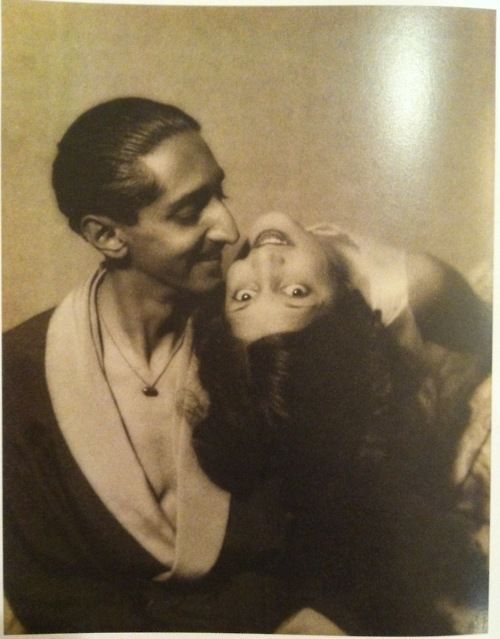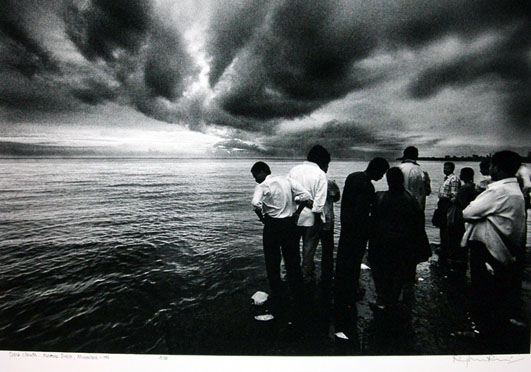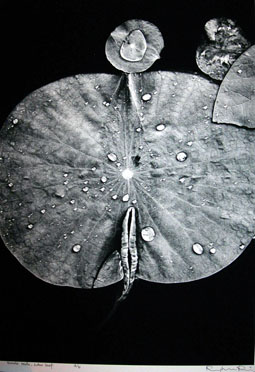The camera officially reached India in 1855. However, it was not until much later that it was picked up as a career or even an alternative kind of artform.
After the turn of the 20th century, increasingly commercial demand for portrait photography led to the opening of studios in major Indian cities. This translated into different stylistic conventions, such as the use of elaborate, Victorian-style indoor props - ornate wooden stools, painted curtain drapes – in an attempt to emulate a European environment.
Pre- Modern Photography
Soon after the Daguerreotype was invented in 1844 in France, the cameras were advertised in Calcutta. As photography was practiced in the west, it too came to India and was used to document places and people.
Raja Deen Dayal

Raja Deen Dayal.
The Maharaja of Ajaigarh with his Three Sons.
Bundelkhand, Central India, circa 1882.
Albumen print
Raja Deen Dayal, one of India’s most celebrated 19th-century photographers, was appointed as a court photographer to the sixth Nizam of Hyderabad who allowed him unique access to the inner circles of aristocratic life.
Man Ray

Man Ray
Maharaja Yeshwant Rao Holkar II of Indore and his wife Maharani Sanyogita Devi
Circa 1930
Although Man Ray was not Indian, he photographed Maharaja Holkar of Indore in 1930. The Maharaja was one of the first few Indians who wanted to create his own identity and image; as a result, he liked to be surrounded by luxurious things and the finest people.
Homai Vyarawalla

Homai Vyarawala
Prime Minister Nehru with Mrs. Simon, the wife of the British Deputy High Commissioner, onboard the first BOAC flight in India.
Homai Vyarawalla archive: Alkazi Collection of Photography
Homai Vyarawalla was born on 9 December 1913 in Gujarat. She moved to Bombay to pursue a diploma at St Xavier’s College, after which she joined the J J School of Arts where she studied photography. Her first assignment at college was published by Bombay Chronicle after which she regularly picked up more freelance assignments like projects for The Illustrated Weekly Magazine of India. In 1942, Homai moved to Delhi, where she joined the British Information Service as photojournalists; she was often spotted in Delhi near political hotspots, with her film camera ready to photograph at any moment.
Modern Photography
In the 1960s, it was difficult to access equipment for
At the same time, the west saw a progression of galleries and museums collecting photograph collections and considering photography as collectible fine art. In order for photographers to
Today Indian photographers like Raghu Rai and Dayanita Singh are well established and other Indian photographers are also gaining exposure and recognition on the international circuit. Participation in biennales, art fairs,

Raghubir Singh
Raghubir Singh was an Indian photographer, most known for his landscapes and documentary-style photographs of the people of India. He was a self-taught photographer who worked in India and lived in Paris, London,
Raghu Rai

Often referred to as the father of modern photography, Rai first picked up photography in 1965 when he borrowed his first camera. It was only after he joined a prominent newspaper as a photographer that he started photography as an art form. Raghu Rai’s strong points are his perspectives and his power of envisioning an image. The frame had the ability to trap viewers' attention; he documented the plight of Bengali refugees during the Liberation War and the victims of the Bhopal Gas Tragedy amongst others.
Contemporary Photography
Digital photography and computer technology have transformed the realm of photography today. Sophisticated software allows photographers to experiment and helps to enable powerful images and layers that subvert time and reality. This new digital world is alluring and magnetic in its emotional expression and the photographer can post-produce, welding technology like an artist's brush. Although India is behind the curve when it comes to photography, it has been embraced as a kind of art style.
